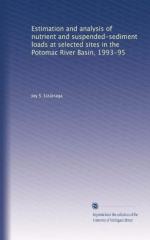|
This section contains 779 words (approx. 3 pages at 300 words per page) |

|
Landscapes form and constantly change due to weathering and sedimentation. The area where sediment accumulates and is later buried by other sediment is known as its depositional environment. There are many large-scale, or regional, environments of deposition, as well as hundreds of smaller subenvironments within these regions. For example, rivers are regional depositional environments. Some span distances of hundreds of miles and contain a large number of sub-environments, such as channels, backswamps, floodplains, abandoned channels, and sand bars. These depositional sub-environments can also be thought of as depositional landforms, that is, land-forms produced by deposition rather than erosion.
Depositional environments are often separated into three general types, or settings: terrestrial (on land), marginal marine (coastal), and marine (open ocean). Examples of each of these three regional depositional settings are as follows: terrestrial-alluvial fans, glacial valleys, lakes; marginal marine-beaches, deltas, estuaries, tidal mud and sand flats; marine-coral...
|
This section contains 779 words (approx. 3 pages at 300 words per page) |

|


